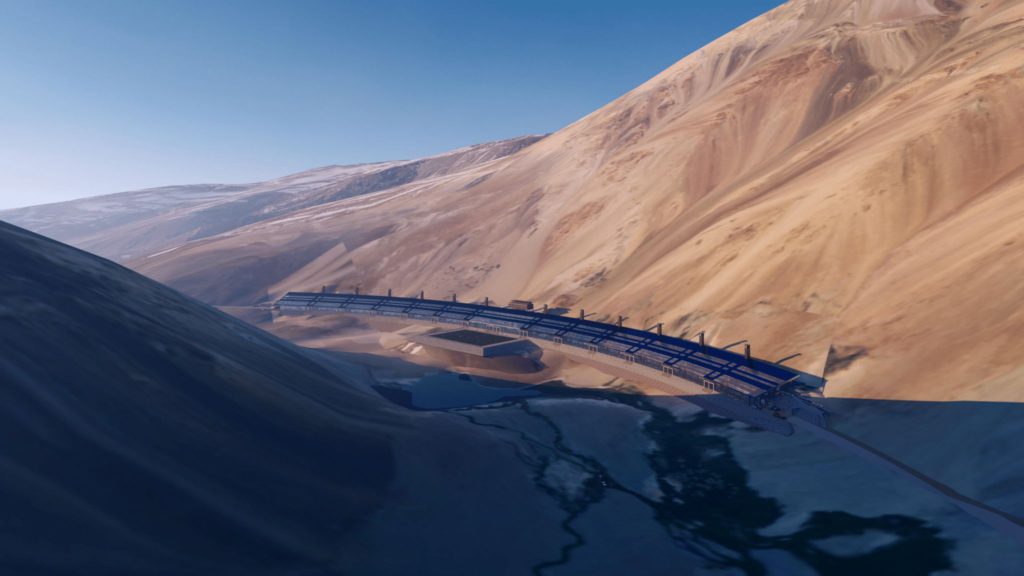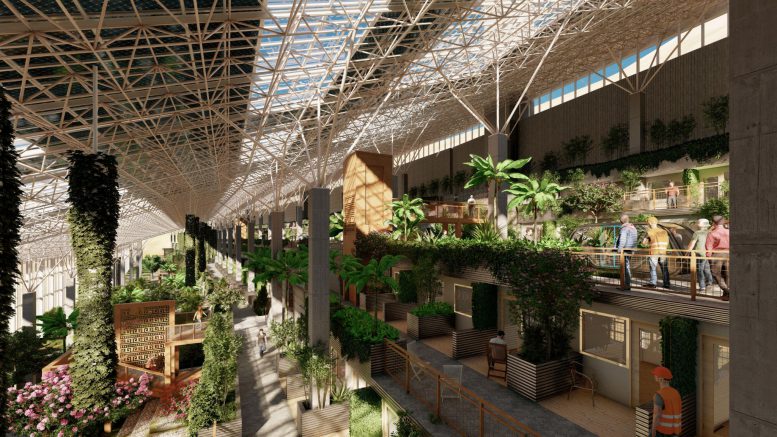The mining industry needs radical change, like how Uber slew taxis, if it wants to get more youth involved in the metals for a greener planet, veteran project developer Rob McEwen says.
One option is to develop sustainable mines that slash water use, grow their own food and generate reusable energy. That’s how McEwen Mining (TSX: MUX; NYSE: MUX) wants to develop its US$2.4 billion Los Azules copper project in Argentina with the backing of Rio Tinto (NYSE: RIO; ASX RIO) and automaker Stellantis.
“Uber addressed most of the concerns about the taxi industry and they decimated the taxi industry,” McEwen, chairman of the company, told The Northern Miner’s Global Mining Symposium on May 25 at the TSX in Toronto. “Why don’t we look at the mining industry and say what are the issues, the behaviours that the general public doesn’t like?”
Canada has less than half the mining and geology students it had in 1970, while electric batteries will require 336 new mines globally by 2035, according to Benchmark Mineral Intelligence. McEwen, who developed Goldcorp into an $8 billion behemoth, likes to cite Finland’s Geological Society, which has estimated that just one generation of renewable technologies to address climate change needs 4.5 billion tonnes of copper. That’s six times the volume of all copper mined throughout history.
Compared to that, even the Los Azules project, the world’s ninth-largest undeveloped copper deposit, would only produce 415 million lb. of copper annually for the first 13 years of a 36-year life.
However, the project envisions a solar-powered year-round residence that’s three football fields long and collects its own water to cut usage by 90%. It features terraced gardens for growing food hydroponically and aeroponically (in mist) in a closed ecosystem with ponds where fish excrement becomes fertilizer.
Residents would also benefit from higher oxygen levels indoors than prevailing at 3,000 metres above sea level. For the fit, there’s an outdoor soccer field. Going green is one way to ease project approvals and should be a flag to attract youth to the industry, McEwen says.
“The mining industry is one of the highest paying industries in the country and in most countries around the world. But why is it unattractive? Because most people have thought this is something they don’t want to do. But it uses so many skills of today.”
Consultancy PwC forecasts there will be US$33.9 trillion of assets under management related to environmental, social and governance (ESG) issues by 2026, up 84% from US$18.4 trillion in 2021. ESG assets held by institutional investors may reach 21.5% of total global assets under management in less than five years, it said.
“Just think if our industry could get some of that money by changing our ways,” McEwen said. “To me an added expense to get through that doorway and get part of that US$20 trillion, it’s worth the price.”
Still, skeptics say the road to sustainable green energy won’t necessarily be smooth as we replace dirty but abundant and cheap fossil fuels with unprecedented mining and new technology. Many minerals require poisonous processing and some jurisdictions in Africa and the Far East can be just as toxic politically and environmentally.
And despite all the talk of incipient shortages in most metals, the price of copper itself has been languishing far below the US$4 per lb. threshold that miners want to see to develop projects.
Lower-than-expected copper prices are just a short-term product of high interest rates and concerns over an incipient recession that has investors opting for bonds, McEwen said. Widespread forecasts predict supply gaps in critical minerals as automakers race to snap up supplies, he said.

The Los Azules project, with its proposed residence and outdoor soccer field pictured above, boasts 14% stakes held each by Rio Tinto, Stellantis and McEwen himself, plus 52% with McEwen Mining. The Toronto-based company filed an environmental impact statement in April. Government approvals may take 18 months, a feasibility study may be completed by early 2025 and construction could start near the end of this decade, McEwen said.
Initial ore processing would be 125,000 tonnes a year, ramping up to 175,000 tonnes, he said. The 2017 preliminary economic assessment envisioned starting at 80,000 tonnes and increasing to 120,000 tonnes in the firth year.
Los Azules holds 962 million indicated tonnes grading 0.48% copper, 0.06 gram gold per tonne and 1.8 grams silver for 10.2 billion lb. copper, 1.7 million oz. gold and 55.7 million oz. silver, according to a 2017 preliminary economic assessment. The project has an after-tax net present value of US$2.2 billion at an 8% discount rate for an internal rate of return of 20% and a 3.6-year payback period. Cash cost would be US$1.14 per lb. copper.

Los Azules is located in north-western Argentina. Credit: McEwen Mining
Operating in Argentina faces headwinds of inflation at more than 100% a year and an uncertain mining rulebook, which McEwen says is part of a populist movement sweeping South America. The company also faces political challenges in Mexico at the El Gallo gold project where the Fenix expansion envisions a new process.
“We’re uncertain, because it is definitely not a mining-friendly government right now,” he said. “Chile and Peru send shivers down the spine of everybody in the copper industry and that worsens the deficit that’s being projected, because Chile and Peru produce 40% of the world’s copper.”
McEwen is open to new technology, whether it’s hypersonic plugs fired at rock faces to mine faster and easier than blasting, or Rio Tinto’s Nuton unit adding a catalyst to the heap bleach process to slash water use while nearly matching conventional flotation mills for recovery.
“I remember walking through the SpaceX factory — just gleaming white floors, long, beautiful stainless steel, people moving with purpose — I’d like to see a mine like that,” he said. “We can involve the most current technologies and philosophies about what a mine could look like.”


Be the first to comment on "Global Mining Symposium: McEwen calls for Uber moment to kickstart mining industry "